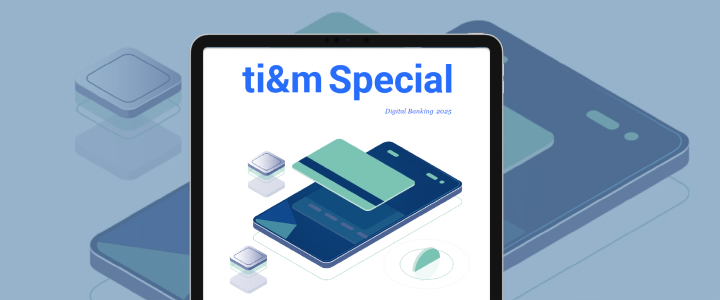The importance of digitalization has become clear in recent times. Brick-and-mortar stores are closed, and physical contact with the customer is a rare occurrence. Where yesterday a friendly handshake was given, today customers are turning to digital me-dia. This move towards a digital lifestyle was already underway, but the coronavirus situation has accelerated it. This will have a lasting impact on customer behavior. A digital sales channel is no longer just a nice feature, it is essential for survival.
As a result of the crisis, customers are now explicitly demanding digital services. Customer identification is one element of this; digital identification is required in order to be able to acquire new customers.
There are countless applications that use customer identification. Although the basic elements for identification are the same, the form varies significantly depending on the use case.
The forms and strength of this identification can be
divided into three levels of trust (LoT):
LoT 0: Self-declaration: Simple customer registration with cus-tomer-provided input such as name, address, email, or phone number.
LoT 1: Verified identity “low”: Verification of identification docu-ments and other traits, such as scanning and verification of pass-port, ID, driver’s license, or home address.
LoT 2: Verified identity “high”: LoT 1 verification plus verification of the person via liveness check and photo comparison. As set out in the FINMA Newsletter 2016/17, there are two options:
1. Video identification
This method is widely used by banks. An agent verifies the identity via a video call, generally in a call center. The advantage is that a verified electronic signature can then be issued straight away. Customer acceptance of video identification is increasing, but it is associated with comparatively high costs.
2. Online identification
Full identification of the customer is performed using artificial intelligence. Unlike video identification, with online identifica-tion the customer can have their identity confirmed at any time of day. However, it is not currently possible to create a verified signature by this means. FINMA requires a sum of money to be transferred to an account in the customer’s name. This money transfer will be replaced in the future, for example by reading the RFID chip in biometric identification documents such as the Swiss passport.
Use cases help determine requirements
A number of use cases come to mind for the three LoT levels: Customer newsletter (LoT 0):
A customer registers for a newsletter. The customer expects a simple registration process requiring minimal information, such as name and email address. By sub-mitting the data, the customer gives their declaration of intent.
Concluding a lease agreement
(LoT 1/LoT 2 if legally compliant contract signing is required):
In this case, identification must be carried out in accordance with the selfregulatory organization of the Schweizerischer Leasing-verband (SRO/SLV). For digital identification, LoT 1 is generally sufficient. The address also needs to be checked, which can be performed automatically by means of a public register. The cus-tomer can undergo a simple identification process. In the case of contract signing, a verified signature is required. In this case, the LoT must be increased to 2. Video identification is manda tory here, in line with the Swiss Federal Office of Communications (BAKOM) regulations.
Opening a bank account (LoT 2):
Legally compliant identifica-tion is required in order to open a bank account. FINMA laid the groundwork for this with the Newsletter 2016/17 and Revision 2018. Either video identification or the simpler online identifica-tion can be used to open a customer account. This method is well established in the financial sector and widely accepted by the customer.
Verified signing of contract documents (LoT 2):
To enable con-tract documents to be signed for existing or new customers, iden-tification to LoT 2 is required. Owing to restrictions by BAKOM, currently only video identification can be used for this purpose. Companies should therefore ask themselves whether they really need a verified signature for the contracts, or whether a simpler means of expressing intent would be sufficient.
Identification that supports the customer journey
Having different stages of identification is a great way of supporting the customer experience. This is especially true if the customer has not yet made a firm decision about the product. In this case, identification follows a number of steps.
In a first step, a customer sets up an account, for instance in a customer portal, social network, or advice platform. After a simple initial registration process (LoT 0), it is now possible to share information with the customer in a targeted way. If the customer would like a consultation, straightforward identifica-tion in line with LoT 1 can be carried out.
After the consultation, the customer may then sign the contract digitally, in a legally compliant manner, by means of an LoT 2 identification process. The customer has then been fully identi-fied and, as an existing customer, can obtain products and ser-vices as well as digitally sign additional contracts. At each step, the information previously provided by the customer is reused. This significantly reduces the hassle of LoT 2 identification for the customer.
Digitalization is in demand
Digital customer identification is essential, and not just because of the current situation. Customers are demanding fast and se-cure digital solutions, for identification in particular. Outofthebox standard solutions, such as the IDCheck from ti&m, are perfect for these requirements. The service is ready to use in around 15 days, and can be successively expanded to streamline processes further.
Depending on the use case, identification can be used to up grade a customer inquiry or to open a customer account. The aim is to achieve a high degree of automation to help reduce costs. The solution can be further optimized by integrating systems such as CRM or archiving systems.
Companies need to switch over to digitalization now, before they get left behind. One thing is certain: the crisis won’t be over for a while yet, and the digital sales channel is going to be the channel of the future.



